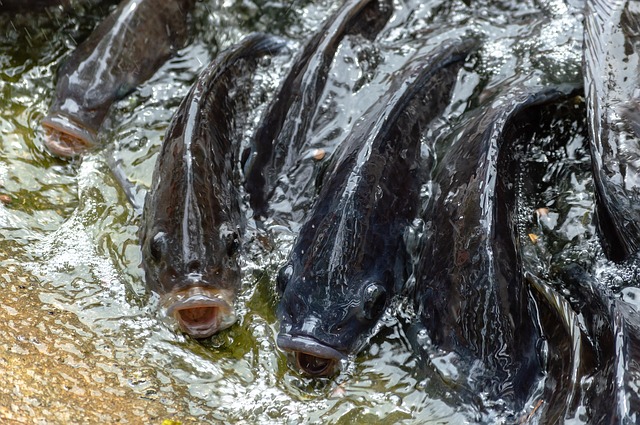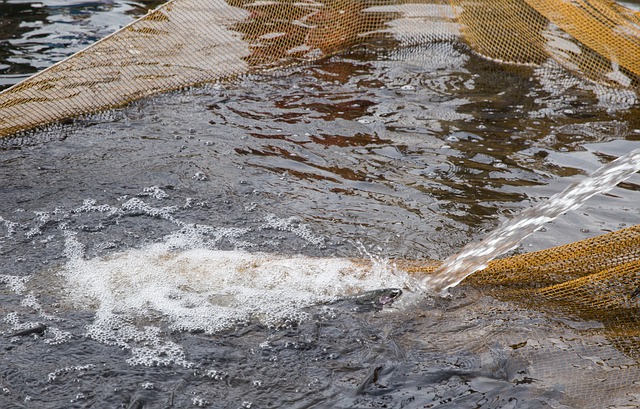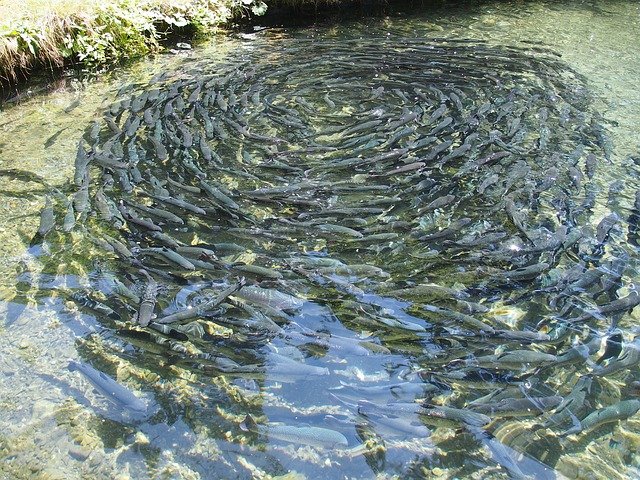Currently, there are more non-vegetarians in the world. In addition, the essential nutrients of the human body are obtained from non-vegetarian foods. 80% of the population of India are male and 60% are female non-vegetarians. Of these, 48 percent men and 42 percent women prefer to eat fish. These huge numbers of people need a lot of fish in the market to meet the demand for fish in their daily diet. In this situation, small and big fish traders have a way to make huge profits in biofloc fish farming.
In order to raise fish in a few days and export it to the market, the present fish farmers have started biofloc fish farming. Many people have benefited from this by cultivating fish in the right natural environment in a scientific way. You may not be able to find a job for sure right now. In this case, you can do some reliable independent work or business from which you can earn huge money. Of these, biofloc fish farming is the best. Today we are going to tell you how to start your own independent business by doing biofloc fish farming through detailed discussion below.
#What is biofloc fish farming?
Before starting biofloc fish farming, the first thing that comes to mind is what is biofloc fish farming? Why do we do biofloc fish farming? According to this source, biofloc fish farming is a completely eco-friendly method of fish farming. Through this it is possible to earn a lot of money by cultivating fish in very few days at a very low cost. Water toxins such as Ammonia, Nitrate, and Nitrite are used as fish food here. High-density fish farming purifies water by using water wastes and toxins as fish feed. This biofloc method was originally adopted to dispose of irrigation water on a farm.

#How does this method actually work?
Biofloc fish farming is done in the right weather in a completely natural way like growing fish in a natural environment. This is cultivated in small ponds or tanks or reservoirs. The most common size in this highly profitable farming tank is 4 diameters. In biofloc fish farming, fish are reared in a mixture of protein-rich foods with the proper presence of sunlight. It is also used as aqua animal feces and fish food. Heterotrophic bacteria are the main ingredient in biofloc fish farming which helps the fish to grow faster. Ammonia and Nitrite in fish feed are converted into protein foods by exposure to these heterotrophic bacteria. As a result, the amount of fish food increases. Therefore, by providing less food, food is produced from it and the demand for fish food is met, thus reducing the amount and cost of feeding during fish growth.
#Method of formation of biofloc fish farming:
To start biofloc fish farming you need to follow some steps. Since it is a completely natural way to cultivate fish, you need to create a favorable environment by adopting some scientific methods in the beginning. The methods are discussed below.
1. Selecting the right pond or reservoir or tank/structure:
In this fish farming, first of all you have to make sure that there is a proper tank or proper structure of the pond. If you are new to this farming, you can start with lined ponds, concrete ponds or indoor tanks. Cultivation in ponds may be somewhat risky due to heavy rainfall in the tropics. Excessive rainfall can increase the water level in the pond and leave the fish. It is best if you start biofloc fish farming first with an indoor tank. However, care needs to be taken to ensure that adequate sunlight falls on the water. This is because adequate sunlight helps to grow algae which helps a lot to meet the demand for fish food.
2. Proper ventilation system:
Every animal needs oxygen to survive. In similar of this fish farming, special attention needs to be paid to proper ventilation in the water to meet the oxygen demand of the fish. Paddlewheel aerators are commonly used in tanks or ponds. Biofloc fish farming requires 6 milligrams of oxygen per liter of water per hour. Generally, 30 HP (horsepower) per hectare is required to run the motor. In addition, motors with 200 HP (horsepower) per hectare are driven depending on the speed and production of water. Paddlewheels are placed in the pond or tank in such a way that the water can circle in an equal flow.
3. Choosing the right species:
Biofloc fish farming uses pure and high-quality water. In the first stage, sufficient biofloc cannot grow in the water. Heterotrophic bacteria are needed for this. These bacteria produce proteins in contact with algae and various toxins in the water. This extra protein meets the fish diet needs. In addition, the huge dietary demand for shrimp and tilapia fish is derived from this extra protein. Therefore, proper selection of some species of fish is required where extra protein can meet the dietary requirements of other fish.
4. Carbon levels control:
Toxic substances like ammonia in water combine with fish food to produce proteins. But too much ammonia harms fish and water. In addition, carbon in the water is used to maintain the level of carbon in the water and to reduce the amount of ammonia in the water. This carbon produces heterotrophic bacteria that convert toxic substances like ammonia into proteins in carbon-to-nitrogen mixtures. Carbon levels need to be given depending on the ratio of shrimp feed. The ratio is 9:1 at the beginning which may increase to 12:1. For this, molasses, cassava, hay, sugarcane, or starch can be used.
5. Growth of Biofloc:
The most important thing in biofloc fish farming is the growth of biofloc. Because it meets the need for extra food for fish. Moderate sunlight, proper climate, proper heat level of water helps to increase biofloc. The amount of biofloc initially ranges from zero to about four / five units per milliliter. The following week, up to ten billion heterotrophic bacteria-rich bioflocs are formed per cubic centimeter.
6. Clean the pond or tank after specific cultivation:
After several fish farms, the quality of water became worse than before. In biofloc fish farming, it is always necessary to clean the excess biofloc to maintain the growth of the fish and the right favorable environment. In this case, complete tank water or pond water needs to be drained. This water can be transferred to the mother tank for future fish seedlings without wasting it.

#Biofloc fish farming in India:
Biofloc fish farming in India is currently a huge success. Considering the demand for food, this fish farming is done in a completely natural way in a scientific manner in Punjab, Haryana, Maharashtra, Kerala, West Bengal, Bangalore, Pune, Madhya Pradesh, etc. of India. Biofloc fish farming requires a constant water supply. In areas where water scarcity is observed, water is supplied artificially through pumps to fill the water shortage. Biofloc fish farming also requires dry food and protein which can be easily obtained in all these regions to meet the demand. Biofloc fish farming has been developed in all those areas without increasing the unnecessary expenditure on food imports.
#Biofloc fish farming training in India:
At present this fish farming is a helpful method for starting an independent business. This requires proper practice and training. Biofloc fish farming training in India there are many centers from where you can take training directly or online. You can easily get training in Uttar Pradesh, Punjab, Haryana, Madhya Pradesh, West Bengal, Kolkata, Pune, Kerala, Orissa, Hyderabad, Gujarat, Delhi, etc. at a very low cost. You can contact here for more information.
#Biofloc fish farming cost:
Proper preparation is required before starting any business. Especially if the financial infrastructure is not strong, it is difficult to start a business. In the beginning, Biofloc fish farming cost is relatively high. Money has to be invested in the construction of karon ponds or tanks, purchase of fish feed, purchase of fish seedlings. According to the general idea, it takes 20 to 25 lakh rupees to start this fish farming properly in a chamber of 4 diameters. It costs 10 to 15 lakh rupees to build a chamber,15 to 20 thousand rupees to buy food, and 10 to 15 thousand rupees to buy fish. In addition, ancillary costs, such as electricity bills, require money to pay for regular maintenance. But even if the cost is higher in the beginning, more profit can be made later.
#Advantages and disadvantages:
Every job or business has its advantages and disadvantages. Biofloc fish farming is not an option. The advantages and disadvantages are discussed below.
Advantages:
- This fish farming method is a completely eco-friendly process.
- This cultivation is possible with little water.
- The excess food requirement of fish is met through Biofloc.
- The demand for fish in the market can be met by increasing the number of fish in a short period of time.
- It is possible to make more profit by marketing faster.
Difficulty:
- Pumps are required to supply water regularly.
- Electricity is required to run the pump.
- A regular supply of moderate sunlight is required.
- Increasing the amount of ammonia or nitrogen in the water prevents the growth of fish.
- Proper placement of paddlewheels is required for the proper supply of air or oxygen in the water.
Conclusion:
The human body needs to eat non-vegetarian food regularly to meet its protein needs. Most people in India like to eat fish. Adequate fish needs to be supplied to the market to meet the demand for this food. To fill this gap, this fish farming can be started on its own in a short time. The concept of biofloc fish farming has been given through a brief discussion above. From where you will get enough information.
